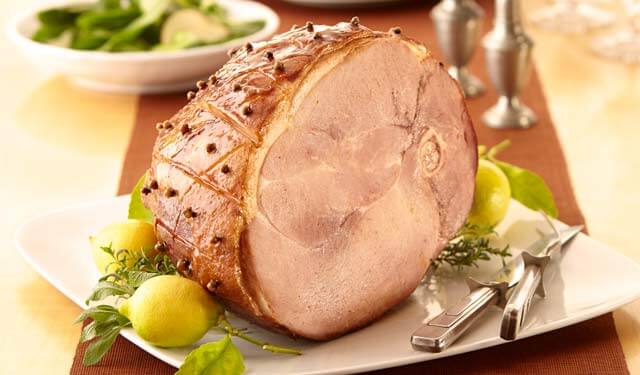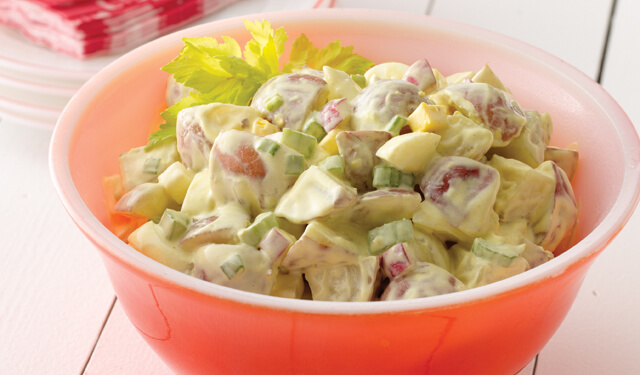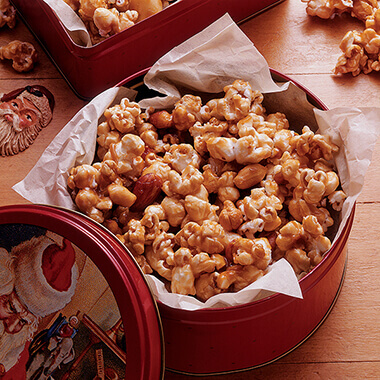
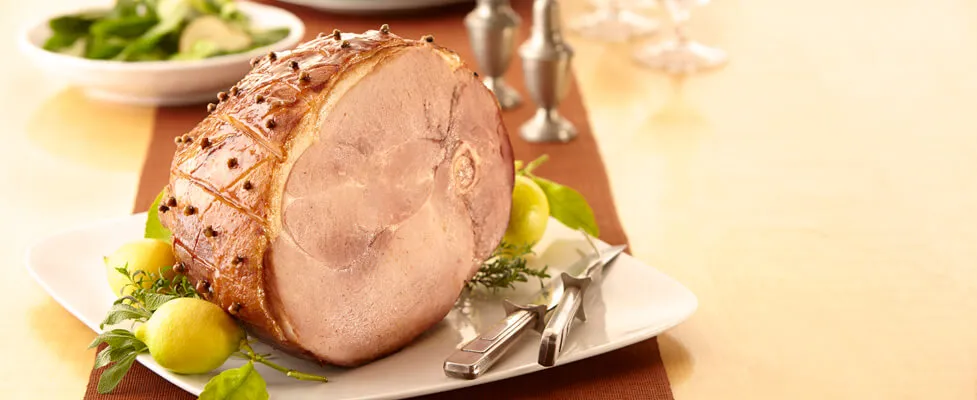
Ham 101
Easter is almost upon us, and I’ve taken on the daunting task of hosting this year. Don’t get me wrong - I love holidays and having people at our house. The more, the merrier. I’ve hosted Thanksgiving before, and it went pretty well. My turkey was perfectly golden brown, and I couldn’t have been prouder of my selection of side dishes. But for Easter, the tradition for both my and Adam’s family is to have a ham. Hold up – a ham?
SEE THE RECIPE
 by
Mallory
by
Mallory
 by
Mallory
by
Mallory
Easter is almost upon us, and I’ve taken on the daunting task of hosting this year. Don’t get me wrong - I love holidays and having people at our house. The more, the merrier. I’ve hosted Thanksgiving before, and it went pretty well. My turkey was perfectly golden brown, and I couldn’t have been prouder of my selection of side dishes. But for Easter, the tradition for both my and Adam’s family is to have a ham. Hold up – a ham? I’ve eaten them every Easter since 1987, but it’s confession time: I’ve never baked a whole ham. Where do you begin? There seem to be so many options at the grocery store – city ham, country ham, spiral cut….which do you choose? It helps to know what’s what, so I talked with a butcher at a local meat shop and got the scoop.
Whole Ham versus Half Ham
Hams, which are basically the hind end/leg of a pig, are sold either whole or half. A whole ham is likely more than you will need for Easter dinner – a half will usually suffice. What’s the difference between the two halves? The butt half is the upper part of the ham. This is mostly “rump” which, in turn, makes this part more fatty but also more tender and flavorful. The shank half is the lower end, which means it is more leg and less fatty. It is easier to carve, but the cut is slightly tougher than the butt half.
Country versus City Ham
When you think of a traditional Easter ham, you are more than likely thinking of a city ham. What’s the main difference between a country and city ham? A country ham is cured with a dry rub and hung to dry; it is sold raw unless otherwise labeled. A city ham is usually sold fully cooked and often smoked. Since country hams are not very common, this article will focus on types of city hams, which is what you will probably find on your grocery store shelves.
Bone-in or Boneless?
An obvious benefit of buying a boneless ham is that they are much easier to slice. I still prefer the bone-in ham for a few reasons. First, the bone imparts a nice flavor to the ham as it cooks. Second, I love using ham bones for making soup! My mom always made split pea soup using our leftover Easter ham bone, so I look forward to it every year!
Spiral-Cut
This type of ham is fairly common Easter-fare. More than likely, one of them has graced your table at some point. They come fully cooked and usually with smoke flavor added. They are sold mainly for ease-of-use – you don’t necessarily need a knife to carve them since they are already cut. One major downfall to a spiral cut ham is that they tend to dry out quickly in the oven. They also usually come with a pre-made glaze that makes it hard to customize the flavor of your ham. I prefer making a homemade glaze.Glaze
If you’re looking for a perfect, traditional Easter ham recipe that uses a cooked ham, look no further than our Glazed Old-Fashioned Ham recipe. The glaze in this recipe is buttery, tangy and sweet, and it really complements the salty ham. The key is to glaze the ham every 20 minutes to make sure the glaze is well-distributed and evenly coats the ham.Ham Leftovers?
It is rare to not have leftovers from Easter ham since there is usually so much of it. If you find yourself with plenty of leftover ham, have no fear – we have plenty of recipes to make use of it. Some of my favorites are Ham Mac & Cheese Soup and the Split Pea Soup (make use of that ham bone!).
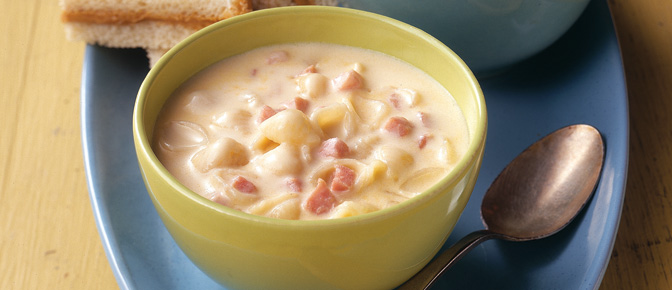
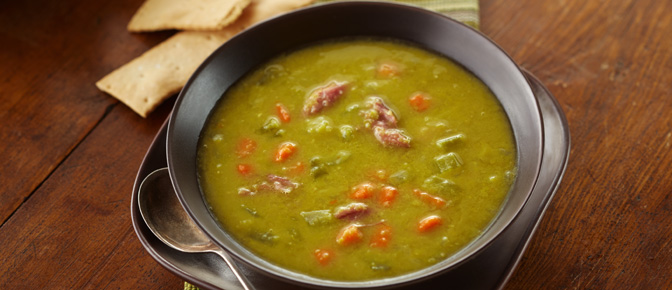
What are some of your favorite ways to use leftover ham? Leave us a comment, below - we'd love to see your ideas, too!
Share Your Thoughts
Did you find this article helpful? Has it inspired you? What else would you like to know?


